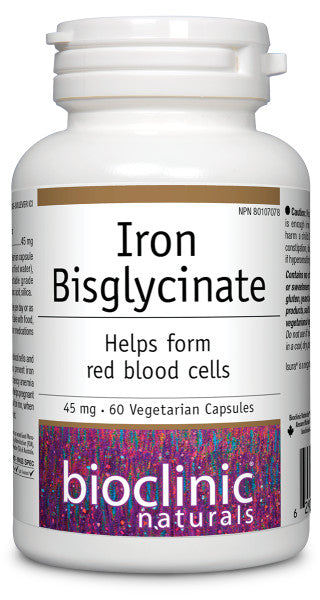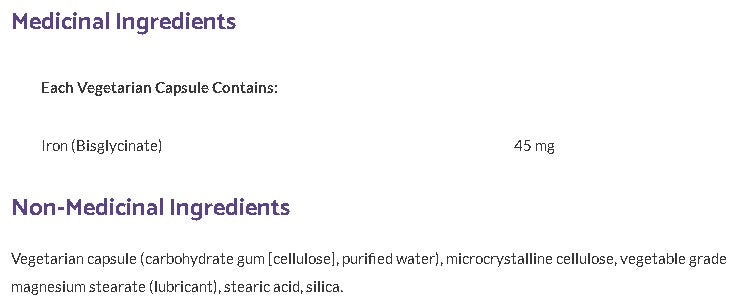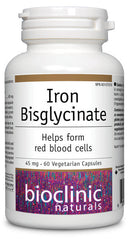



Iron Bisglycinate
- 17.99$
0.00$- 17.99$
- Unit price
- per
Description
x- Provides a clinical dose of 45 mg of elemental iron per capsule.
- The highly absorbable form, iron bisglycinate chelate, has higher bioavailability than standard forms.
- Comparable to iron sulfate at ¼ to ½ of the same dose of elemental iron
- Iron bisglycinate chelate is significantly better tolerated than commonly used forms, allowing its continued use and improving its effectiveness in replenishing iron stores.
- Suitable for vegetarians and vegans
Iron deficiency remains the most common nutrient deficiency and the most common cause of anemia worldwide. Depleted iron stores impair mitochondrial function and cellular respiration even in the absence of anemia, particularly in metabolically active cells, contributing to symptoms ranging from fatigue and exercise intolerance to cognitive and cardiac impairment. In most cases, the primary means of replenishing iron levels is oral iron supplementation, which is preferable to parenteral administration (injections) in the absence of severe symptoms or contraindications.
In contrast, iron bisglycinate chelate, composed of two glycine molecules chelated to ferrous iron (Fe2+), has demonstrated significantly higher bioavailability than standard forms of iron such as ferrous sulfate, ferrous fumarate, and polymaltosed iron. This form is much better tolerated, allowing iron levels to be effectively restored using lower doses. For example, at ¼ to ½ the dose of ferrous sulfate, iron bisglycinate chelate has shown similar effects on hemoglobin, ferritin, and other markers of hematologic status in controlled trials, with better tolerability. It has also been shown to be effective and well-tolerated in various patient populations, including pregnant women and children with celiac disease. 45 mg of elemental iron per capsule, higher than most formulations, is consistent with current recommendations for restoring depleted iron levels in pregnant women, although below the threshold generally associated with adverse effects.
Produits recommandés
Produits récemment consultés
- Choosing a selection results in a full page refresh.



